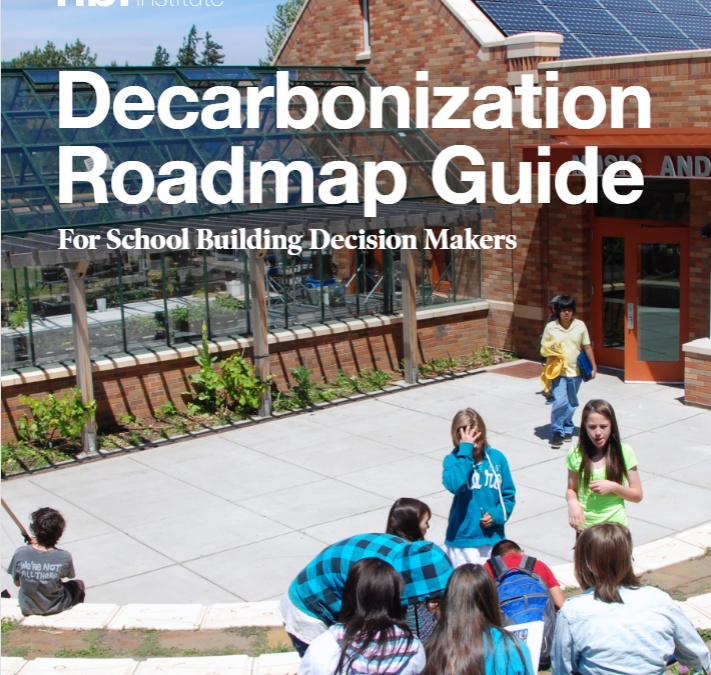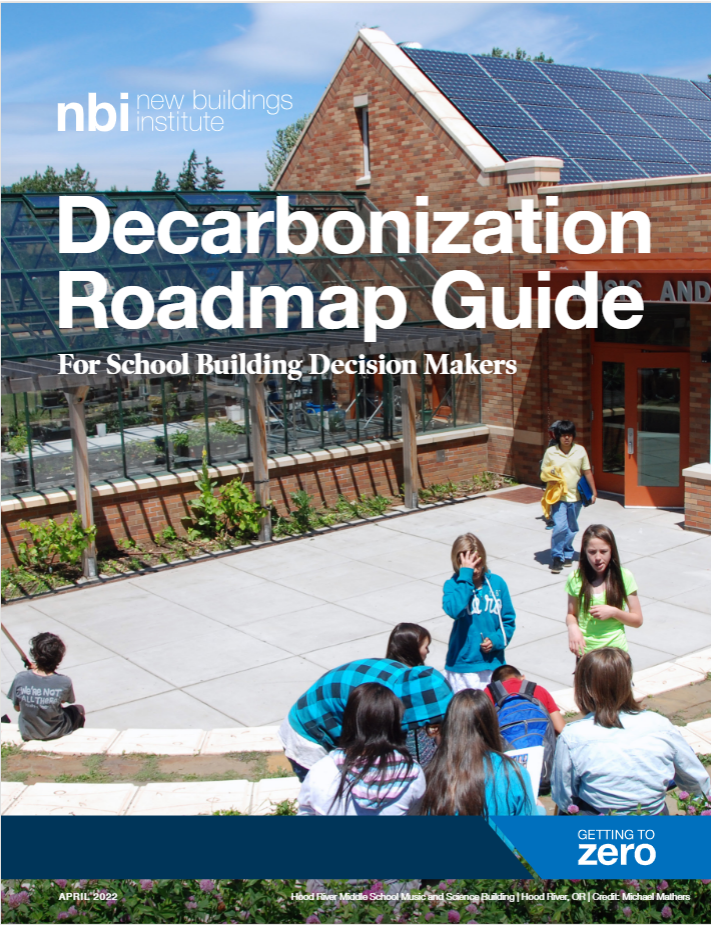Investments from state and federal leaders provide vital funding to create healthy schools, futureproof against climate impacts

America’s K-12 schools currently spend $12.5 billion per year on energy. Meanwhile, students are demanding a more hopeful and sustainable future, starting with better learning environments than the many aging, unhealthy, and underfunded school buildings where they currently spend their time. Decarbonized schools, which provide healthy, energy efficient buildings with no on-site gas combustion, are an ever-important strategy in decreasing global carbon emissions, says the New Buildings Institute (NBI).
These buildings are also healthier and more productive learning spaces, provide better resiliency in the face of extreme weather events and power outages, and savings from utility bills and operations that puts money back into the classrooms.
Decarbonization Roadmap Guide
A variety of funding programs from the U.S. federal and state governments have over $2 billion in funding earmarked for major improvements in school facilities, bolstering budgets that are often victim of regional funding crises.
Released in April, the Decarbonization Roadmap Guide for School Building Decision Makers and accompanying toolbox of resources from New Buildings Institute (NBI) can help districts leverage these funding opportunities by developing a district decarbonization roadmap to identify cost effective strategies and approaches to achieve net zero greenhouse gas emissions across a portfolio of buildings.
These materials were developed during the inaugural Getting to Zero Over Time in California Schools cohort, facilitated by NBI and the California Division of the State Architect’s (DSA) Sustainability Education & Outreach Program. The cohort was established in 2020 to support K-12 school districts with the development of their own roadmap to achieve zero net energy and zero carbon across their portfolio.
Getting to zero over time is a concept that ensures the district has tools they can use, such as goals or guidance documents, to address a building lifecycle events like new construction, modernization, or retrofits—in a way that aligns with the district’s long-term energy and carbon reduction goals.
Reilly Loveland, Senior Project Manager at NBI
The effort of bringing together experts in building decarbonization and representatives from schools on the path to carbon neutrality is an extraordinary undertaking. DSA is thrilled to have played a part as this guide will launch school districts at all stages toward healthier, cleaner and greener schools. Efforts like this will springboard and showcase the leadership of the school sector working towards achieving the California State goal of economy-wide decarbonization by mid-century.
Ida Clair, California State Architect
The Decarbonization Roadmap Guide is designed for school districts stakeholders that are interested in healthy, efficient, carbon neutral schools. It lays out achievable goals and actionable steps to decarbonization in school district portfolios. This guide and associated toolbox provide key elements for creating a roadmap, outlining goals and approaches to consider when key building lifecycle events occur.
Funding opportunities
The federal money is available to modernize buildings, improve energy efficiency, and decarbonize school transportation fleets, offering an opportunity to align funding with work that supports local climate action plans to bring about emissions reductions and positively impact the health, wellness, and resiliency potential of entire communities. These funding opportunities are part of the 2021 Infrastructure Investment and Jobs Act and the 2009 American Recovery and Reinvestment Act Energy Efficiency and Conservation Block Grants. These programs, as well as federal financial support for state energy offices and the Federal Emergency Management Agency (FEMA), will provide schools with much-needed financial support to bring buildings and district portfolios up to modern standards and provide resilient community spaces.
Support from different states
States such as New York have committed millions to support the schools clean energy transition in under-resourced communities. The NYSERDA Clean Green Schools Initiative officially opened with $59 million for schools to apply for on April 22. NBI, along with NYSERDA, hosted a three-part webinar series in early 2022 to kick off school decarbonization road mapping efforts for schools in New York State.
In California, Assembly Bill 841 provides up to $600 million for energy and HVAC upgrades to bring ventilation and space conditioning up to healthy standards. Building on the momentum of AB 841, now referred to as CalSHAPE, an effort launched out of Stanford University has brought together leading researchers and advocates, including NBI, to develop a new policy roadmap for advancing climate resilience and sustainability in California’s K-12 public schools. More information on the foundational research that led to the formation of this roadmap can be found on the Stanford Center for Innovation in Global Health website.
This approach can be customized for districts of any size, no matter where they are in the process, according to Loveland. During the California cohort effort, districts like Lake Tahoe Unified, utilized the resolution and Owner’s Project Requirements templates to formally adopted carbon neutrality into their district goals and construction practices. The guide walks districts through how they too can utilize the processes, tools, and practices most appropriate for their district to achieve carbon neutrality.
The Decarbonization Roadmap Guide for School Building Decision Makers is available from the NBI website.

